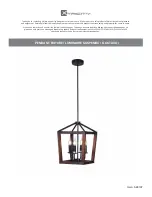
TABLE 3
MAXIMUM SAFE
OPERATING SPEEDS
SIZE
MAXIMUM RPM
4CB200
1800
6CB200
1800
8CB250
1800
10CB300
1800
12CB350
1800
14CB400
1800
16CB500
1550
18CB500
1400
20CB500
1300
22CB500
1250
24CB500
1200
26CB525
1100
28CB525
1000
30CB525
950
32CB525
900
36CB525
800
40CB525
750
45CB525
700
2.6.1.6 If a flow control valve is used, it must have
free flow (indicated by an arrow on the valve
body) directed away from the element.
2.6.1.7 The final connection to the rotorseal MUST be
made with flexible hose and place no radial
load upon the rotorseal.
Do not use rigid pipe at the connec-
tion to the rotorseal. Rigid piping will
result in excessive loads on the ro-
torseal bearings, shortening life.
Maximum applied air pressure is 110
psig (7.5 bar). Operation at pressures
exceeding 110 psig may result in
damage to the element. Consult the
factory if operation at pressures
greater than 110 psig is desired.
3.0
OPERATION
Exceeding the operating limits
described in this section may result
in personal injury or equipment dam-
age.
3.1
Torque, RPM and Pressure Limits
3.1.1
The developed torque is dependent upon the
applied air pressure and operating speed. If
the developed torque seems inadequate,
check for oil, grease or dust contamination.
Maximum applied air pressure is 110
psig (7.5 bar). Operation at pressures
exceeding 110 psig may result in
damage to the element. Consult the
factory if operation at pressures
greater than 110 psig is required.
The non-asbestos friction material
used in Airflex CB units may not de-
velop rated torque initially. A short
“wear in” period is required. Clutch
or brake operation should be moni-
tored closely to prevent excessive
heat generation from slippage.
3.1.2
Maximum safe operating speeds are shown
in Table 3.
Do not exceed the operating speeds
shown in Table 3. Operation at
speeds greater than allowable will re-
sult in permanent damage to the ele-
ment, personal injury or death.
PDF Format
8
© Copyright Eaton Corp., 2001. All rights reserved.









































